Features
Backwards Down The Number Line
Phish Albums Ranked Worst To Best
by Ken DiTomaso
Phish is a live band, so why are we talking about their studio albums? The balance of attention their music receives leans so far in favor of their live performances that even many of the band’s biggest fans don’t bother with their albums. But in their prime, they actually did release some pretty great records. To date, they’ve released 13 official studio albums (though I’ve added in a few apocryphal ones bringing this list up to 18), and while there are certainly some weaker records among them, Phish is a better studio band than many people give them credit for.
When talking about their studio albums, it’s worth considering how Phish in the studio is different from Phish live. Their albums often feature versions of songs radically different from what they play on stage. Sometimes that’s because a song is still in its infancy when it’s laid to tape. Other times, it’s because the band couldn’t resist the temptation to fiddle with the song in ways that would be impossible for them to do live, such as taking advantage of production techniques that only can happen in a studio environment. And, of course, there’s also the fact that the band’s famous jamming, which drastically transforms songs in concert, tends to be kept to a minimum in the studio. Additionally, a huge number of the band’s songs have never made to a studio album (and probably never will), which creates “what if” scenarios for the track-lists of pretty much every record in their discography.
All of this makes their studio material really quite unique. Unlike the vast majority of other bands, Phish’s studio albums aren’t the defining catalogue of their work but more of a diversion from the main event. Because of this, judging the band’s music exclusively by their studio work would be a mistake. Songs that flop in the studio often end up as big highlights on stage. It’s true that listening to their studio output may only give your part of part of the picture, but I think it’s still a part that’s worth exploring.
And no, in case you’re wondering, I won’t be following this list up with a companion article ranking the band’s live albums. They only have a small handful of completely traditional live records (i.e., favorite versions of songs edited and compiled to form an album). Beyond that, the band has preferred to release their live performances in sets documenting complete shows (or multiple complete shows). They’ve been releasing full recordings of every new show they play for many years now alongside semi-regular archival releases of older shows. This is absolutely the ideal way to experience the band’s music, but there are so many of these releases it’s far beyond my capabilities to rank them. However, if somehow you’re not already familiar with Phish’s live music and are reading this article for recommendations, the easiest suggestion is to start with A Live One, which compiles highlights of performances from 1994. Then follow that up with any of their officially released shows from their ‘90s heyday (the Live Phish archival series is a great source for these). Now, onwards to the studio albums.
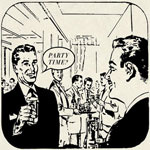 18. Party Time (2009)
18. Party Time (2009)
This record was released to accompany the special edition of Joy, and as a result, it kind of gets forgotten about. But that I can understand since it’s basically a collection of outtakes. It’s nice that they released these songs, but I’m inclined to think they made the right decision by cutting this material since there isn’t a single track on this record that ranks alongside those on the album it’s paired with. Only the title track and “Alaska” have endured, and I doubt anyone would even list those among the band’s best. I will admit to kind of liking the incredibly dopey hook in “Let Me Lie,” but the rest of this record is totally forgettable.
17. Undermind (2004)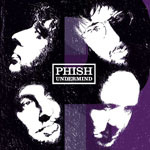
Released just before their 2004 breakup, this ended up becoming Phish’s temporary swansong. And that was a shame, since it’s among the band’s weakest efforts. The songwriting is sub-par from front to back, culminating in "Secret Smile," which might be the worst song they ever recorded. Even most of the more lively tunes don’t really do much to stick with you. The title track and “Scents And Subtle Sounds” are both decent, but they're really only standouts in retrospect since I'm enjoyed live versions of both songs. But in the context of the album, they more or less blend in with everything else. Undermind doesn’t feel like a band closing out a career; it feels like the musical equivalent of shrugging your shoulders.
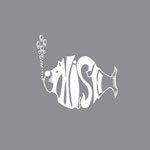 16. The White Tape (1986)
16. The White Tape (1986)
More of a demo tape than an album, Phish’s earliest release is an odd mishmash that’s more interesting than enjoyable. The audio fidelity is weak and only four songs feature the entire band playing together. The rest consists mostly of solo performances, odd experiments, and brief segments of songs that would reappear on future albums. Some of them are fun, but others are downright excruciating (I’m looking at you “NO2”). Back in the days when the band didn’t have much commercially released material, this was probably pretty worthwhile. But its main value now is more the window it gives into the band's early history. It gives ample evidence that they were talented as hell right from the start, and most Phish fans will probably want to hear this at least once. But it doesn't really stand on its own musical merits.
15. Round Room (2002)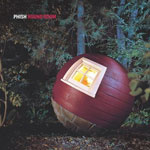
Recorded upon the band’s return from their early ‘00s hiatus, Round Room shows Phish eager to get back to business. But the tunes are pretty shaky, as if Phish was forgetting how to capture their magic in the studio. By this point, the band had begun to develop a sterile and grit-free soft rock sound that they would often employ on their more accessible songs, and this sound appears to some extent on all their studio albums since Farmhouse. I’m not against it in principle, but it doesn’t do the band any favors and often drags down some otherwise good material. The shorter songs on this album exemplify this sort of approach, ranging from catchy but forgettable to not catchy and even more forgettable. The lengthier tunes come off decently well, though I wouldn’t list any of them as personal favorites. All of this makes for an album that never really embarrasses itself, but doesn't have much in the way of big highlights to speak of either.
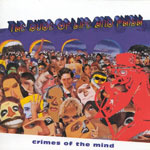 14. Crimes Of The Mind (1994)
14. Crimes Of The Mind (1994)
This record is a collaboration between Phish and Steve Pollak aka The Dude Of Life. Pollak takes the lead on these songs, while all the music is performed by Phish. The Dude’s vocal talents aren’t exactly exemplary to say the least, and while the songs don't really demand a lot of singing chops anyway, I can’t say I wouldn’t have enjoyed this more if someone else were singing. Phish nails the musical side of this record as you might expect, but since the songs are more on the simple side, they don’t have as much to work with when compared to their main repertoire. As far as side projects go, it’s a fun diversion, but I can’t pretend I enjoy this as much as most of their main records.
13. The Man Who Stepped Into Yesterday (1987)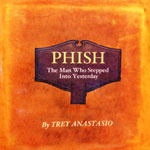
The so-called Gamehendge saga is one of the linchpins in Phish’s repertoire with nearly every track connected to it being a fan favorite. The presentation of the song cycle here in its original form is very rough, however, playing more like an extended demo than a proper album. It’s hard to go wrong with songs this good, but the weak recording quality does the music no favors. The ever-present narration gets in the way at times (that gorgeous guitar solo in “The Lizards” is all but buried), and many of the songs are shadows of what they would become within a few years (“Tela” for example only barely resembles its final form). For the most part, I just wish that they had remade this album a few years later so they could have really done it justice. But thankfully, most of these songs are in frequent live rotation (they even played the disc in its entirety a few times), so great renditions are plentiful. As far as the versions here are concerned, similarly to The White Tape, they're worth it for historical reasons more than anything else.
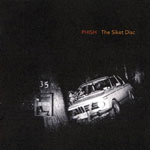 12. The Siket Disc (1999)
12. The Siket Disc (1999)
Sessions for The Story Of The Ghost were partly based around free-form improvisations, and not only did many of the songs on that record arise from those improvs, but there was enough material leftover to be given an album of its own. Suffice to say this isn’t an album of songs, and if that’s the side of Phish you’re into the most, this won’t have much appeal. Likewise, if you’re more into the band when their jamming builds to ecstatic climaxes this probably won’t do it for you either, and that’s pretty much how I feel. However, if you are in the mood for what this disc has to offer, it makes for a good showcase of Phish at their most ambient and spacy. It’s certainly worth a listen or two at the very least. If this kind of jamming is your thing, then you’ll probably consider this album to be a must-have, but personally I could take it or leave it.
11. Big Boat (2016)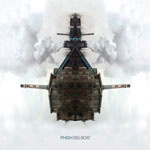
The most recent addition to the band's discography is also their most inconsistent. It’s got its share of highlights, but there are some straight-up baffling song selections mixed in here, too, ranging from the boring to the bizarre. “Blaze On,” “No Men In No Man’s Land,” and “Petrichor” make it worth a few spins at the very least however.
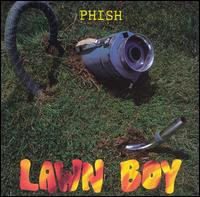 10. Lawn Boy (1990)
10. Lawn Boy (1990)
Just about every song on this album has gone down as a Phish classic in concert, but more than any of their other early records, the versions presented here don’t come close to displaying their full potential. Of the two lengthy tracks presented here, one works and one doesn’t. “Reba” is delightfully zany tune with instrumental sections that cycle through a bunch of interesting ideas. On the other hand, “Run Like An Antelope” is similarly loaded with great musical segments but it doesn’t hold up as a cohesive stand-alone composition. It feels more like a bunch of cool music separated from the context of a proper song. Odd vocal effects obscure the melodies of several songs, and many weird additions to the mix clutter things up. “Split Open And Melt” is by far the worse offender; all the vocal effects and blaring horns turn the song into an outright cacophony. “Bathtub Gin” is really awkward, too, for most of the same reasons. Phish studio albums can be weird to listen to once you get used to the live versions, and Lawn Boy is the biggest example of this for me. Even though I love most of these songs, the studio versions are weirdly clunky in a way that's tough for me to get past.
9. Fuego (2014)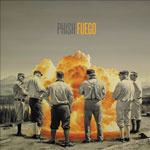
This is a pretty solid late-career record. It isn’t quite top-shelf, but the songs have a way of growing on you much more than they might initially seem. The title track is a total throwback to their early days and became an instant classic in concert, and while the album version comes off as a bit disjointed, it’s still a pretty good time. The only dud is “Wombat,” which sounds like a self-parody. Other than those moments, the album is full of the kind of Phish songs that might not play great live but sound right at home in the studio, and there’s nothing wrong with that since this is a studio album after all.
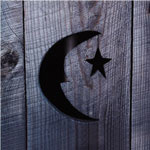 8. Farmhouse (2000)
8. Farmhouse (2000)
Farmhouse heavily tones down a lot of Phish’s more eccentric tendencies and the production edges towards the generic, which causes this album to feel significantly less distinctive than its predecessors. However, the songwriting is still quite strong, with “Heavy Things,” “Farmhouse,” “Bug,” and “Twist,” all holding up as great rock tunes. “First Tube” is among their best instrumentals, too. It also makes for a nice showcase of the band's folk-influenced side, featuring several pleasant, stripped-down tracks in the back half of the album. Because it’s so accessible, it could easily be an album that even someone who didn't like the band much could enjoy.
7. Hoist (1994)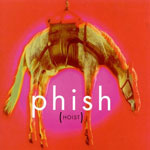
The horns on this album kick ass. Songs like “Julius” and “Wolfman's Brother” become huge standouts thanks to them. But the slower songs aren’t among my favorites, and some songs that would become big highlights live just don’t quite cut the mustard in the studio. “Down With Disease” and “Sample In A Jar” being the biggest two that come to mind, though I wouldn’t call these versions bad or anything either. There are some bizarre song choices, too, like “Demand,” which is one of the most confusing tracks to appear on a Phish album. Hoist falls right in the middle of Phish’s best period, which makes it odd that it's a bit weaker than the albums that surround it, but make no mistake – it's still a pretty good record. It's just got a slightly weaker song selection than its neighbors.
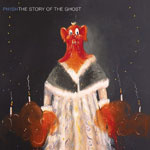 6. The Story Of The Ghost (1998)
6. The Story Of The Ghost (1998)
Phish’s grooviest album. Much of it functions as a showcase for the band’s unique brand of murky funk that they developed in the second half of the ‘90s. Some of the songs just hang out in the general vibe of the album without standing out much, but it's a great vibe so it's hard to complain. The highlights that are here are absolutely massive. “Limb By Limb,” “Birds Of A Feather,” “Ghost,” and “Guyute” are all among the most tightly written tracks in the band’s catalogue. The record loses the funky theme a few times, which makes the overall experience less cohesive than it initially seems, but this is a great collection of tracks all the same.
5. Joy (2009)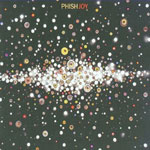
Bands are rarely this good this late in their careers. But after Phish reunited, the spark was still there and if anything, it was shining brighter than ever. They sound completely reinvigorated on this album. There’s not much off-the-wall stuff here, and the songs are pretty conventional for the most part. But this is a tremendous batch of tightly written and memorable rock tunes emanating optimism, fun, and yes, joy. “Backwards Down The Number Line,” “Light,” and “Kill Devil Falls” are among the most memorable songs they've ever done, and the album has no duds to speak of. It even features one of the few Phish songs where the studio version outshines the live version with “Time Turns Elastic.” Trey Anastasio’s orchestrated solo version of the song is still the definitive take on it if you ask me, but the Phish version is all-out prog rock glory all the same. Joy is easily Phish's greatest album since the ‘90s.
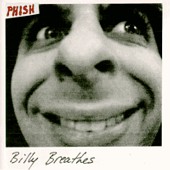 4. Billy Breathes (1996)
4. Billy Breathes (1996)
I’ve seen a lot of people call this the best Phish album, and while I can’t go quite that far myself, I can see where they’re coming from. It’s very accessible, striking a good balance between reducing the band’s goofy and quirky sides and not being completely serious either. The production might be the best in the band’s whole career, perfectly capturing their sound with the clarity that can only be found in the studio without overdoing it and sucking the life out of the music. We can thank master producer Steve Lillywhite for that (he also produced Joy, which secures him in my mind as Phish's best producer). The studio tricks and experiments they utilize all work, adding to the music without getting overindulgent or distracting. There’s a heavy emphasis on acoustic guitars and ballads, too, which makes this album among Phish’s most melancholy. But even those songs are pretty strong.
3. A Picture Of Nectar (1992)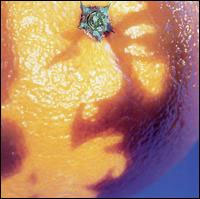
This disc is a really eclectic mix of music; no other Phish studio album is more diverse than this one. It’s got a bit of pretty much everything, which makes it a great record for introducing the band to new fans. “Tweezer” is among the most reliable jam showcases in their catalogue. The studio version feels more like a teaser for what the song could be rather than a great version in its own right, but it still has its own unique vibe. I’m not a fan of the pitch-shifted vocals in “Chalkdust Torture,” but otherwise it’s a killer rocker, as is “Llama.” “Stash” is one of the band's most defining songs, and the studio version captures it wonderfully. There are also a handful of brief oddities and short instrumentals interspersed among the main songs. They could be seen as filler, but they're all actually pretty interesting. An adventurous all-over-the-place attitude is a big part of the Phish experience and this album exemplifies that more than any other.
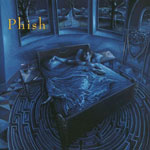 2. Rift (1993)
2. Rift (1993)
On Rift, Phish captures their live sound with near perfection. The studio trickery is kept to a minimum and the production values are similar to a soundboard recording of one of their shows at the time. While this is probably the biggest compliment a Phish studio album can receive, it’s also kind of the album’s weak point. Since these tracks don’t differ from their live versions as much as the songs on other albums do, it doesn’t have as much of an identity of its own. That’s about as minor a quibble as it's possible to have, though. Rift is top-shelf from front to back, with Phish's unique hybrid of jazz, and prog influenced rock compositions at their peak. It's tough to pick out highlights since the album is so even, but “Rift,” “Maze,” and “It's Ice” all stand out as excellent representatives. The band's musicianship is as excellent as it has ever been, with every band member playing something interesting and memorable that interlocks with the others. Whereas A Picture Of Nectar showcased all of Phish's many sides individually, Rift unites all of those sides together on nearly every song.
1. Junta (1989)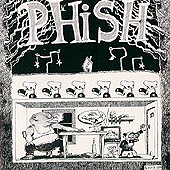
Phish’s proper debut finds the band in full flight right out of the gate. Coming at you with classic track after classic track, Junta provides everything that Phish did best in their early days. Their jovial personality is on full display, permeating every song on the record with their unique sense of humor. From the bizarre tall tales of “Fee,” “Fluffhead,” and “Esther” to the amusing nonsense of “Golgi Apparatus” and “Foam” to the silly nursery rhymes of “Contact,” Phish keeps things playful and fun even when the music itself is serious. The studio versions of live staples like “You Enjoy Myself,” “Divided Sky,” “David Bowie,” and “Fluffhead” may be relatively conservative compared to the epic excursions they would become, but this only serves to highlight how well-written these tunes actually are. These are terrifically tight prog rock compositions with brilliant section after brilliant section flowing naturally into one another. Every track goes from strength to strength, and nothing remotely approaches being a boring ‘ol normal song. Complexity is everywhere in the songwriting on this album, yet Phish has a knack for not only making it sound easy but also making such complicated tunes sound incredibly melodic. It’s all presented with straightforward, stripped-down production, which might have sounded completely out of the times in 1989 but hasn’t really dated in the years since. You're just hearing piano, bass, guitar, and drums, but through their playing they make it sound like an orchestra. The most widely available CD version of this album is marred by the inclusion of three oddball bonus tracks, which were appended to the end since it was too long for one disc but too short to properly fill two discs. Hardcore fans might be appreciative of them, but new listeners are likely to just be confused. Not only are they not representative of what Phish usually sounded like live at the time, but it almost seems like they picked recordings that were off-putting on purpose and they don't fit in with the rest of the album at all (which is annoying since Junta is otherwise quite cohesive, flowing nicely from beginning to end). The main album is too damn good for these to drag my regard for it down any, but it is a bit bothersome that my favorite Phish record has to have a disclaimer appended to it.